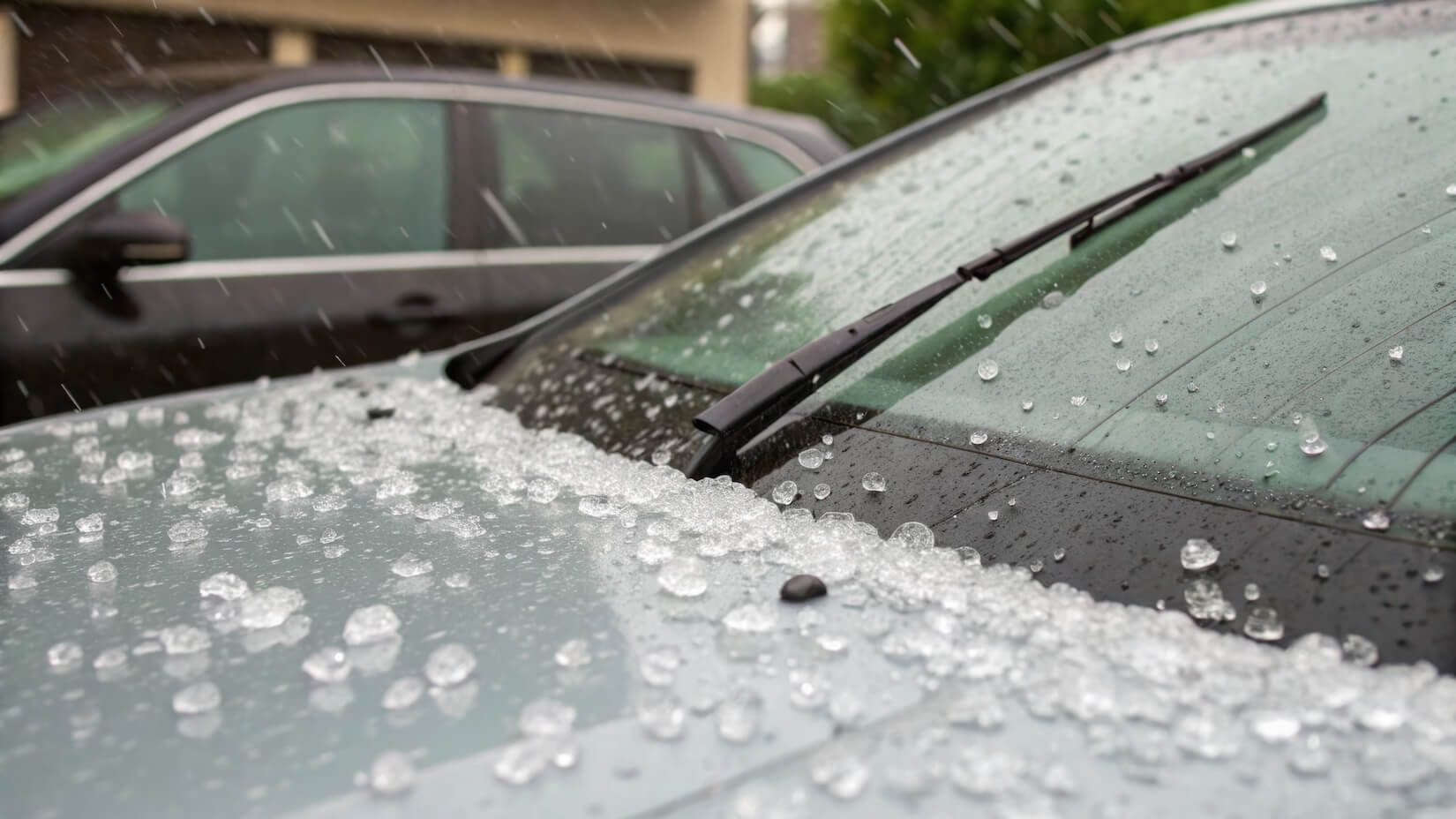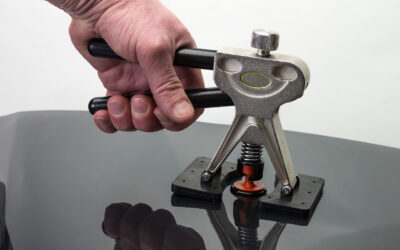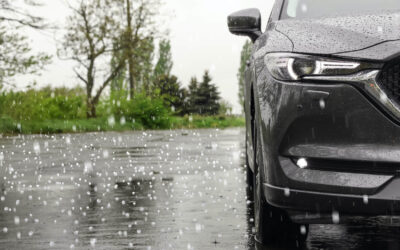Hail damage to your car’s body can be frustrating and costly, and driving through a hailstorm can be scary and damaging. You might get hit more than once yearly if you live anywhere along Hail Alley, from South Dakota through Colorado and down into Texas.
Colorado sits at the heart of Hail Alley, and Denver drivers are no strangers to the damage hail can cause. It’s no surprise that local vehicle owners often search for experienced Denver hail damage repair shops that truly understand how to restore a car after a storm.
In this guide, we’ll break down which types of hail damage can be easily repaired, which may require more extensive work, and what repair methods will get your vehicle safely back on the road.
Repair Options: How to Get Your Car Looking Like New
Ultimately, you’ll need a bodywork specialty to assess the damage, but in the moments after a hailstorm has passed through, there are some steps you can take to look over the damage and get yourself safe:
1. Initial Assessment
Driving through a hailstorm can be terrifying, especially when the hailstones start pounding your vehicle. Once the storm passes and you’ve had a moment to collect yourself, it’s time to inspect the damage. Here are a few tips to get started:
- Be Safe: Before you get out of your vehicle, be sure the hailstorm has passed completely. Hailstorms can be unpredictable, stopping for a minute and restarting, so be sure it has passed.
- Walk Around: When it’s safe, walk around your vehicle. Look for affected areas (hood, roof, trunk, fenders, side panels). Look for dents of various sizes, cracked glass (windshield, mirrors), or broken lights.
- Don’t Touch Anything: Don’t try to fix anything yourself immediately. You’ll want the insurance adjuster to see the damage exactly as it is.
Your insurance adjuster will also inspect the vehicle, so you must protect your ability to file a claim.
2. Document Everything You See:
As soon as it’s safe, start gathering evidence. The more documentation you have, the stronger your case will be if you need to file a claim.
- Take Pictures: Use your phone to take as many photos as possible of all the damage, including dents and dings on the roof, the side panels, the hood, and anywhere else you see damage. Get wide, medium, and close-up shots. If you can, take a video; it is excellent evidence to have if you need it.
- Take Notes: Use your phone or a voice recorder app to note the moments after the hail damage occurred. Treat it like an accident with another vehicle. You’ll need to show your side of the story clearly.
- Witnesses: If other drivers experienced the same hailstorm, get their names and contact information. They will be a supporting voice should you need them.
It might be hard to take pictures and notes in the aftermath of a hailstorm, especially if it was severe, but it could be the difference between getting the maximum claim or none at all.
Repair Options: Getting Your Car Like New
There are two main ways to repair hail damage, and the right option depends on the severity of the damage. Here’s a breakdown of your choices:
1. Paintless Dent Repair:
Paintless Dent Repair or PDR is the ‘hero’ of hail damage body work, and here’s why:
- What it is: PDR uses specialized tools, like metal rods and glue tabs, to slowly and carefully massage and coax the body dents and dings.
- When Can it be Used: PDR can be a dent repair option if there isn’t any paint damage or if the dents are shallow, which is common from a hailstorm.
- Why it’s a Hero: PDR is faster and more affordable than traditional bodywork. Importantly, unlike significant bodywork, it preserves the value of your vehicle.
- When PDR isn’t suitable: Deep creases, sharp dents, paint chipped or cracked, or large areas of severe damage.
Often, PDR is an option, but when the damage is too extensive, the other option of traditional bodywork is necessary:
2. Traditional Auto Body Repair
Traditional bodywork takes more time to repair hail damage and is more expensive. Here’s when hail damage may require traditional body repair:
- When it’s Necessary: Auto body repair will be necessary when your vehicle has severe damage, such as paint damage, structural issues, sharp creases, or large dents.
- Bodywork Process: Bodywork is extensive and includes sanding, filling, repainting, and panel replacement.
- Downside: Vehicle owners often try to avoid bodywork because it takes more time than PDR and is more expensive.
For obvious reasons, you might want to avoid major body work; however, if your vehicle truly needs it because of hail damage, be sure to have it done correctly to get the best result.
Choosing the Right Repair Shop
Choosing the right repair shop will be key to properly repairing your vehicle. Some shops specialize only in hail damage repair, especially along Hail Alley. Here are some things to consider when searching for a hail damage repair shop near you:
- Look for Specialists in Hail Damage Repair (PDR certification): Many body shops have certified specialists who focus on hail damage repair.
- Get Multiple Estimates: Get at least three estimates and compare the cost, experience, and time it will take to repair your vehicle.
- Insurance: Choose a shop that is familiar with and works with your insurance to ensure everything goes smoothly.
Choosing the right hail dent repair shop will make your life easier and get you back on the road quickly.
The Repair Process and What to Expect
Hail damage repair is similar to any other bodywork on your vehicle, but it is slightly different in some ways. Here’s what you can expect from the process:
- Book the Repair: Coordinate with your insurance company and see how they want to proceed. You should get a hail damage specialist who knows precisely what they’re doing.
- Time: Depending on the severity, your vehicle could be in and out of the shop in a day or need up to two or more weeks to repair.
- Repair Warranty: Know the details of the repair warranty. If the work hasn’t been appropriately performed, the paint could start to chip, or the dent could rust. Knowing your warranty could save you money if the repairs don’t last.
If you’ve sustained severe damage, your vehicle will likely be in the shop for at least a few days or weeks.
Get Trusted Hail Repair in Denver with Mile High Dents
Don’t wait for minor hail damage to turn into a major headache. At Mile High Dents, we specialize in paintless dent repair that’s fast, affordable, and trusted by Denver drivers. Our skilled technicians know how to handle hail damage, whether a few dings or dozens of dents.
We work with most insurance companies, offer free estimates, and can often complete repairs in a fraction of the time traditional body shops take. Request your free quote now or call us directly at (720) 772-0133 — we’re happy to answer your questions and schedule you. Located in Denver, we’re proud to help local drivers return to the road, dent-free.
At Mile High Dents, we specialize in paintless dent repair (PDR) for all types of vehicles across the Denver metro area. Whether you’re dealing with hail damage, an annoying door ding, or a larger dent, our expert technicians restore your vehicle to like-new condition without repainting, sanding, or fillers.





